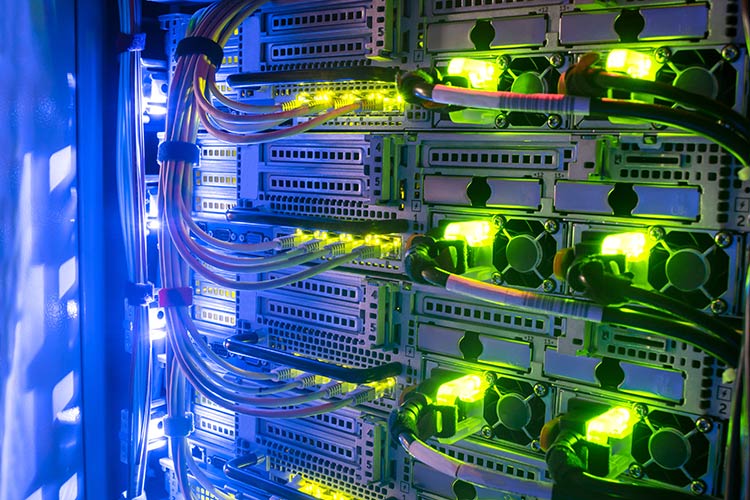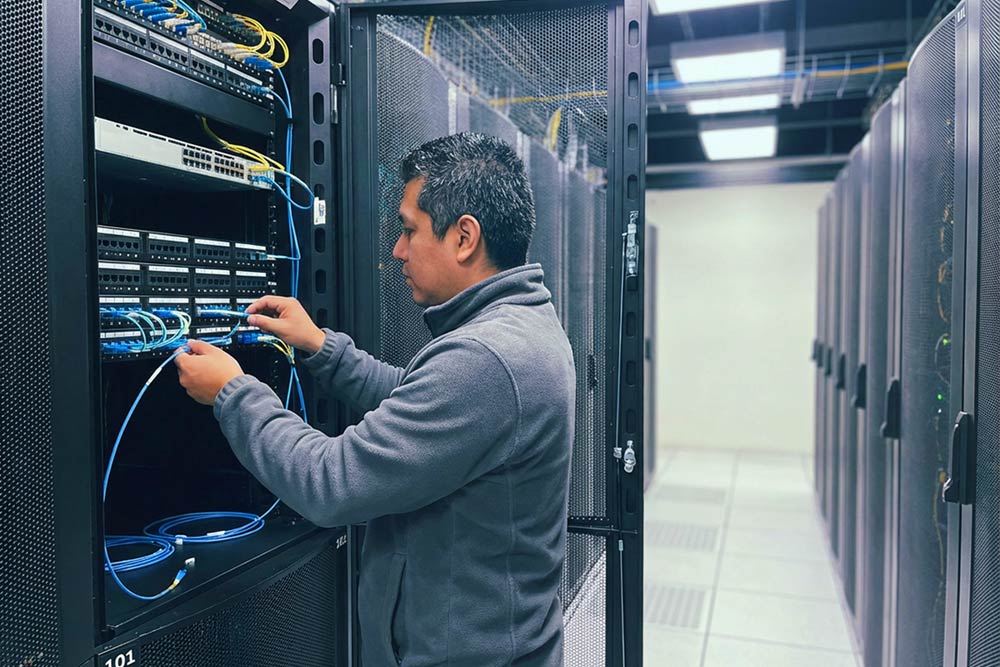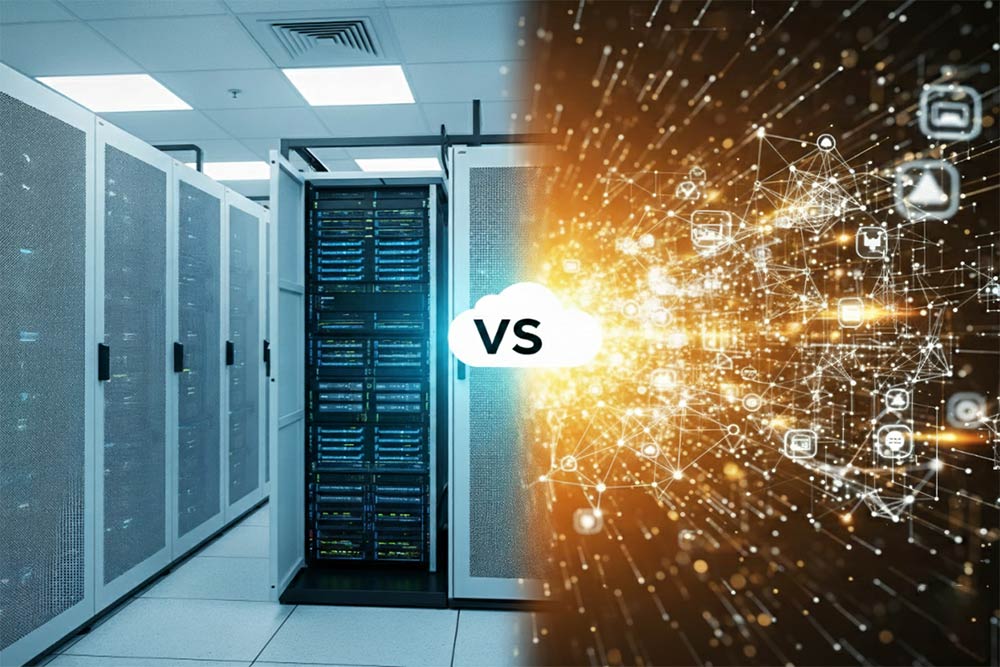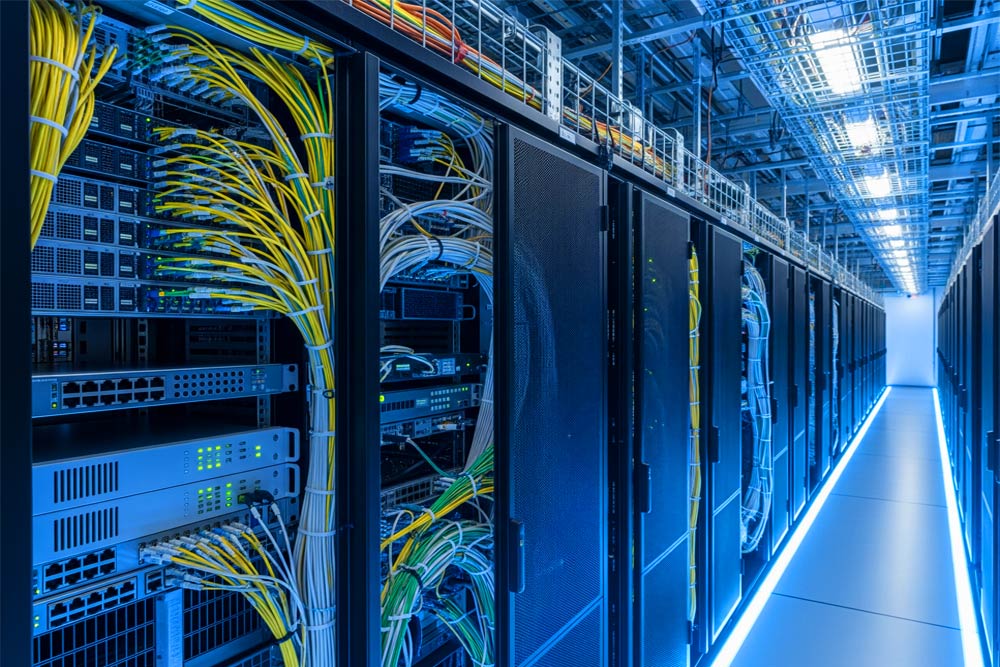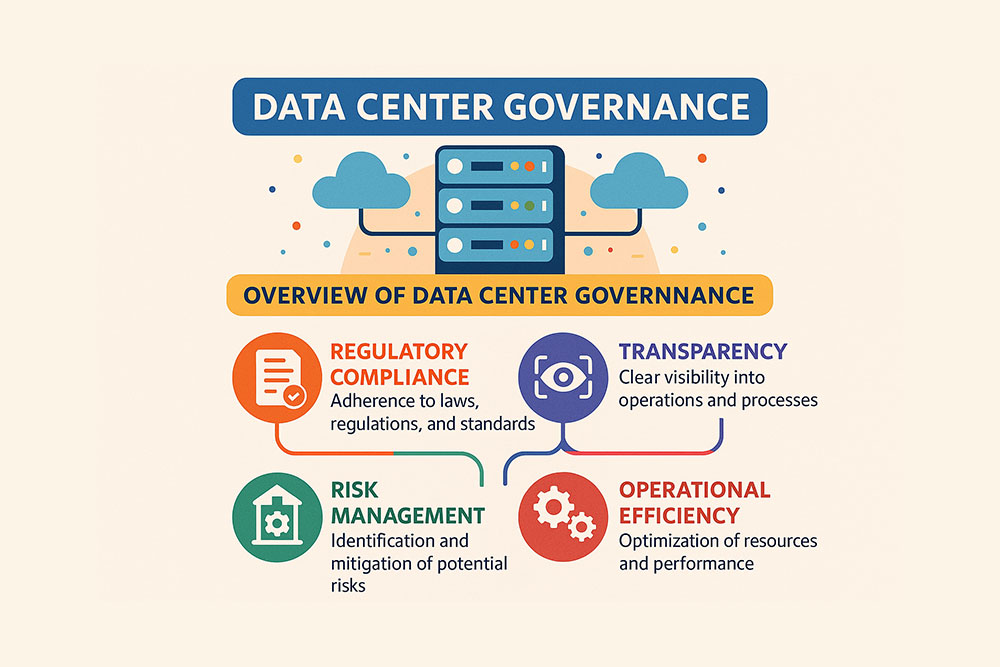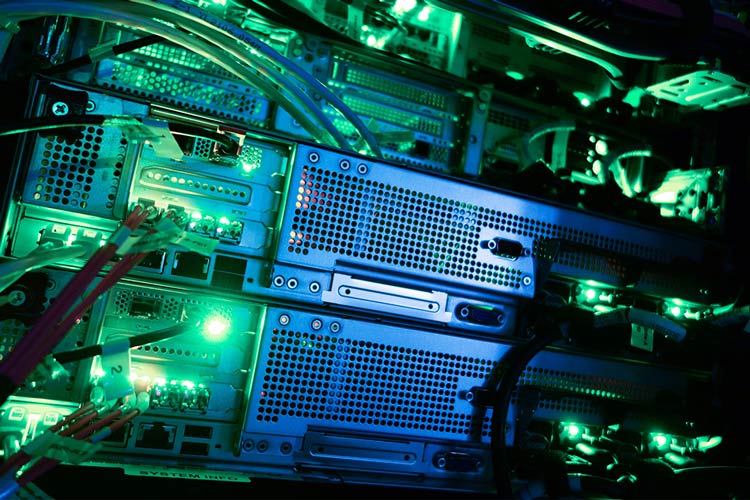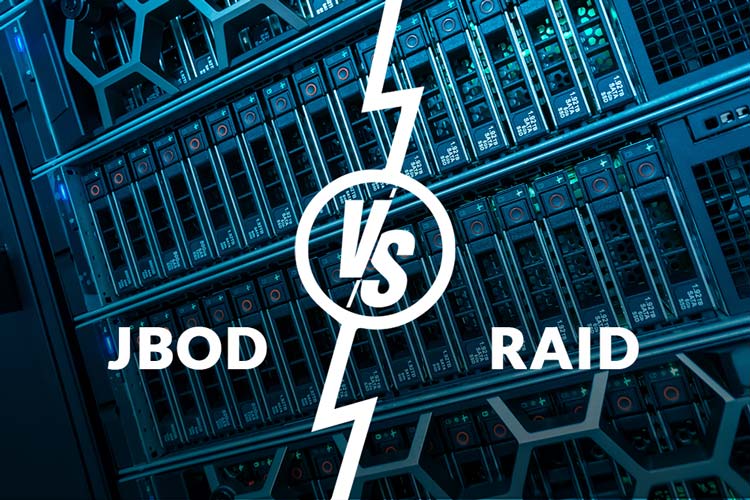Whether we’re conscious of it or not, networks are at the foundation of many things in our lives. Computer networking is a method of connecting computers – or other devices and applications – for the sake of sharing information and resources. Networking enables data to be transmitted across servers and devices, which rely on specific communication protocols to distribute data over either a physical or a software-based connection. If something like an application doesn’t work, it’s most likely a network problem, like congestion issues or an outage. This can affect many people and can cause annoyance for the user and revenue loss for the business. Most industries, and especially those that require high data availability, are heavily dependent on reliable enterprise networking solutions and connectivity to deliver the low latency and security many applications require.
In this article, we’re going to dig into enterprise networking and get familiar with a few essential terms that can make understanding enterprise networking less of a chore. So, if you’d like to learn more about computer networking, how it works, and why it’s crucial for businesses, continue reading.
What is Enterprise Networking Exactly?
It’s simple: if a network is a group of connected computers or servers, an enterprise network is the same thing, maybe scaled up. It can similarly comprise a group of connected computers and servers and a number of physical and virtual networks serving the needs of a large enterprise.
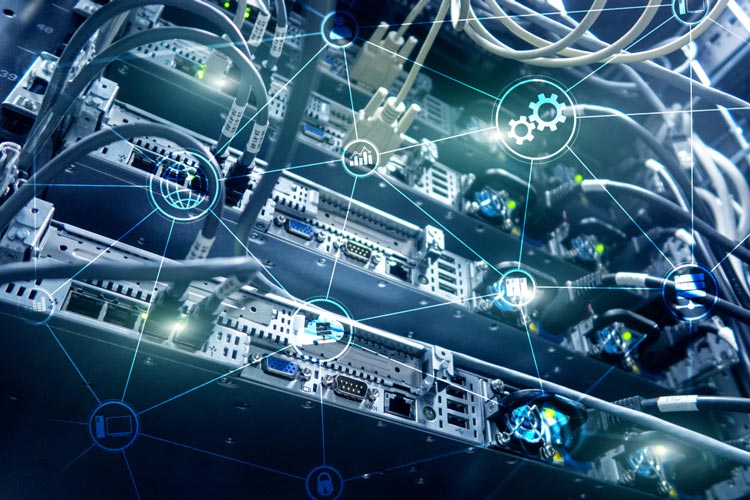
Enterprise Networking Terms You Should Know
There are a few terms you’ll often encounter in the context of enterprise networking, so learning about them can eventually make your job easier with understanding more complex concepts as well. These terms cover important networking aspects, and enterprise networking would be impossible to understand without them. So, without further ado, let’s see, which are those.
Latency
For each and every operation we do on computers and smart devices, data has to be processed. In order to be processed, and deliver a response back to the requester or user, the data has to travel. For example, a smartphone application has to send data to a remote server for processing and then send a response back to the application. Now, depending on geographical distance, the further the data has to travel for processing, the longer it takes for the response to arrive.
A lot can depend on this delay caused by physical distance, that’s why, for most businesses, reducing network latency and increasing application speed is a priority. So, what can you do to reduce latency? The answer is not always a one-size-fits-all, but there are several different strategies that can be beneficial for enterprise networking.
For instance, network optimization for increasing efficiency is a path organizations frequently take. This can mean a complete network redesign, which can improve routes, but improving networks is a set of actions that need to become like a habit for any organization that desires peak network performance.
Optimal network performance is key, however, to really decrease latency, organizations have to get familiarized with edge computing strategies and edge data centers. Instant data availability is essential for time-sensitive applications. To make processing faster, the data is sent first to an edge data center instead of the cloud or central data center. With processing happening closer to the end user, latency is lower, allowing better response speeds and user experiences.
Network Speed, Bandwidth, and Throughput
Data is constantly moving throughout the network. The smoother the route, the faster the data can travel. It might sound simple, but a lot of things can influence data traveling speeds. Packet size, network congestion, or the number of hops the data has to take are all factors that affect latency. Speed, bandwidth, and throughput are key terms to know when optimizing a network.
Speed shows how fast data can change its location. Bandwidth shows the capacity of the network, by which we understand the size or width of the pipe, that allows for a certain volume of data to travel through depending on its size. Throughput, on the other hand, measures what amount of data can travel through in a specific amount of time.
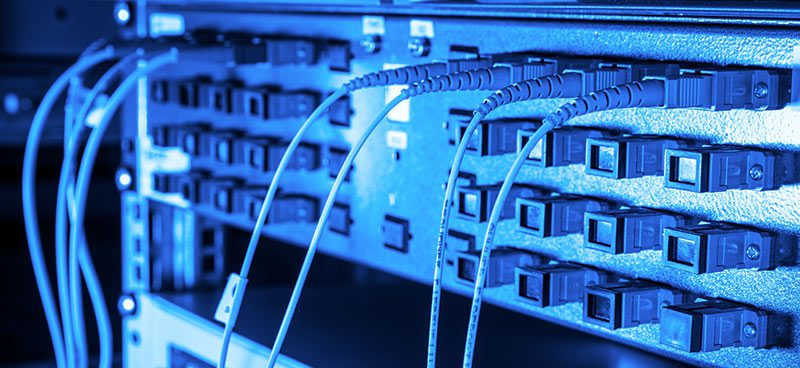
Data Center Interconnection
In a nutshell, the different types of interconnection provide a private connection between two or multiple parties established for the scope of exchanging data. Interconnections are an essential part of enterprise networking because they provide higher quality and more secure connections compared to the alternative of connecting through the public internet. So, interconnection enables businesses to connect privately while avoiding the security hazards and potential instability of the public internet. Also, enterprise networking often requires special connectivity capacity for robust business transactions that wouldn’t be possible without the support of reliable, private connections. Organizations frequently use data center interconnection to reduce latency, so these options are often a key consideration for businesses.
Take a look at Volico Data Center’s connectivity solutions here.
Virtual Networking
Enterprise networking can happen in multiple ways, and virtual networking can be one of those. Virtual networking refers to network infrastructures that are entirely software-based, allowing devices to connect without the need for a physical, hardware-enabled connection. This technology creates an abstraction of network resources like routers, switches, and firewalls, turning them into virtual instances.
Software-Defned Networking (SDN) and Networks Functions Virtualization (NFV) are complementary technologies supporting the efficiency of virtualized network infrastructures.
SDN is a networking approach that uses software-based controllers to manage and optimize network resources, separating the control plane from the data plane.
NFV virtualizes network services like routing, firewalls, and load balancing, so they can run on standard hardware instead of specialized devices. Basically, NFV creates VMs on a hypervisor for the purpose of running network functions. This approach reduces hardware costs and simplifies the manageability of network services.
Subsea Cabling
We don’t tend to think about the seabed first thing when it comes to enterprise networking. However, subsea cabling is truly the backbone of global internet connectivity. Here’s how it works:
For data to be transmitted across vast distances, physical cabling is laid on the ocean floor, connecting continents. The optical fibers in the cables carry the data as light signals. Data travels through these cables, reaching landing stations on the coastlines like the Network Access Point (NAP) of the Americas in Miami. These nodes are important connectivity hubs from where data can continue its journey on other networks until it reaches its destination on either a server, computer, or mobile device.
Subsea cables have always been playing a crucial role in telecommunications and have become important enablers of the public internet. And now, that the data volumes are reaching previously unimaginable levels, the demand for reliable subsea cabling for networking also grows.
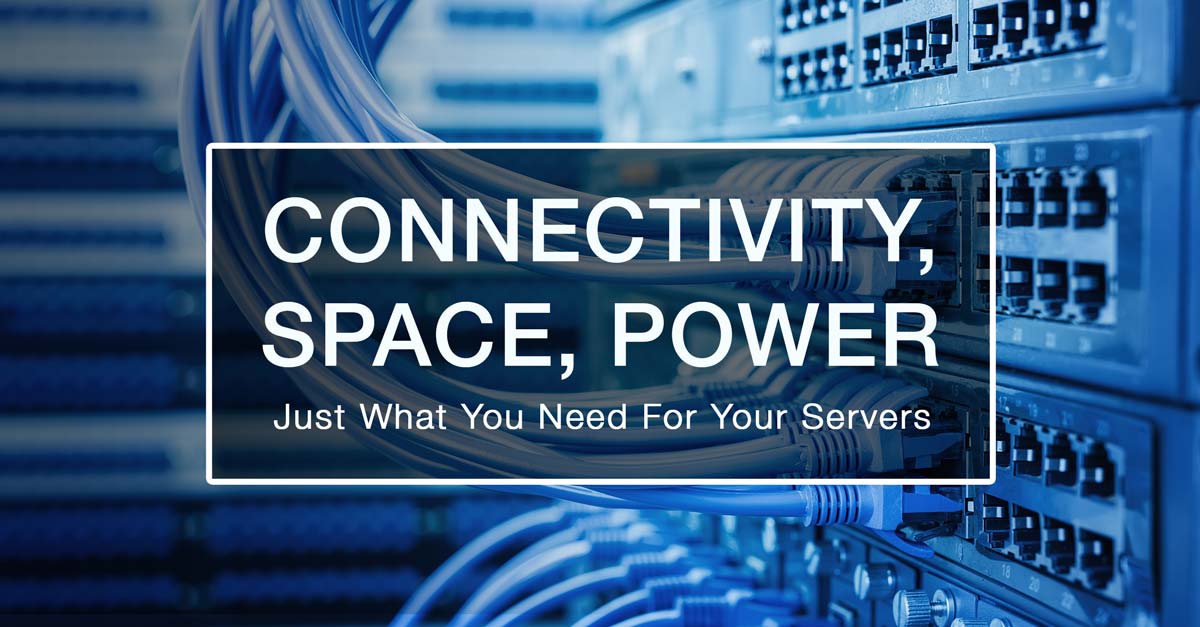
Your Enterprise Networking Solutions From Volico Data Centers
In a world where everything depends on connectivity, enterprise networking solutions are crucial in enabling efficient and secure communication and data sharing. They support cloud computing and IoT and ensure seamless, low-latency operations and collaboration. Networking, as such a fundamental necessity for all business operations, will continue to stay critical for boosting business growth. Find the best networking solution for your business at Volico Data Centers.
If you’d like to learn more about enterprise networking and find the solution to fit your business’s specific needs, call (305) 735-8098, or connect with us in chat to discuss details with our networking experts.

